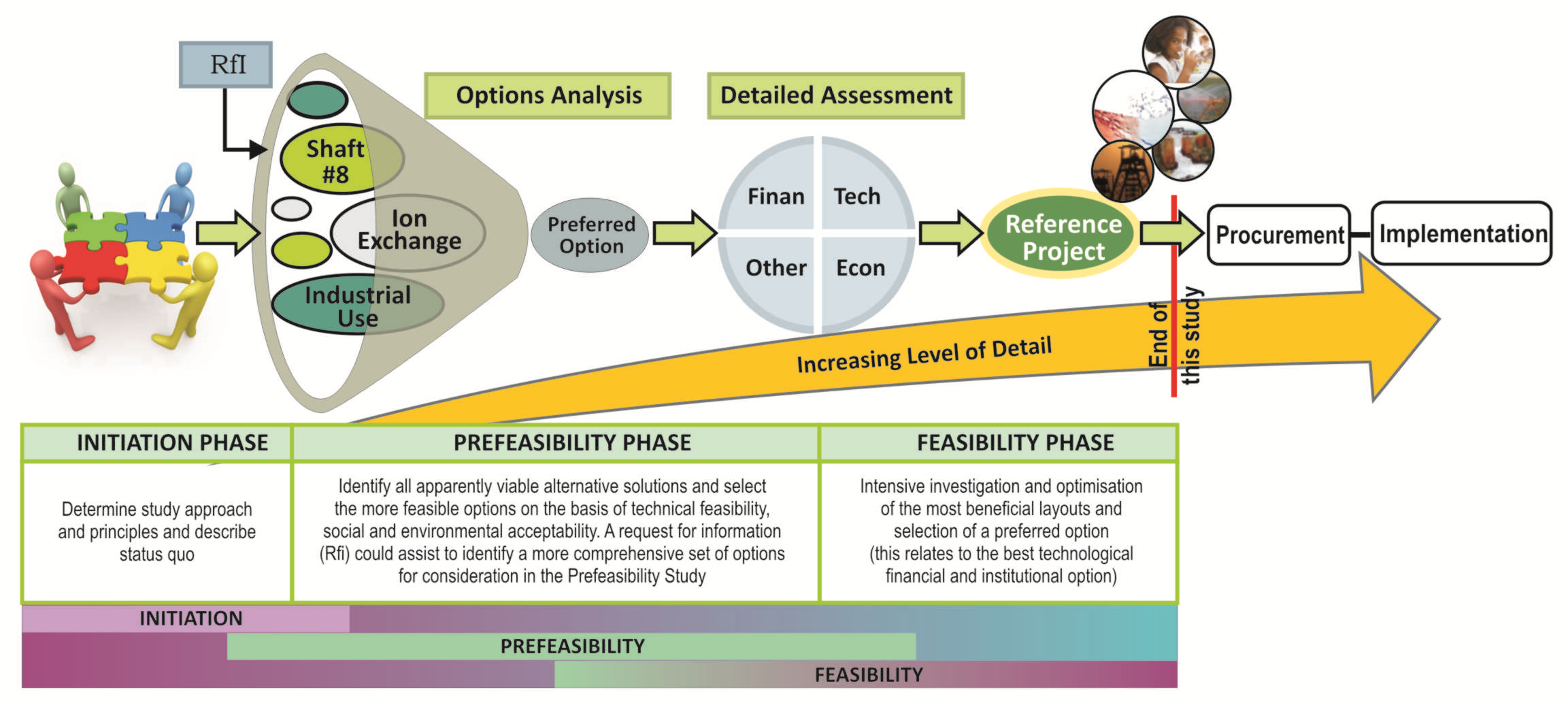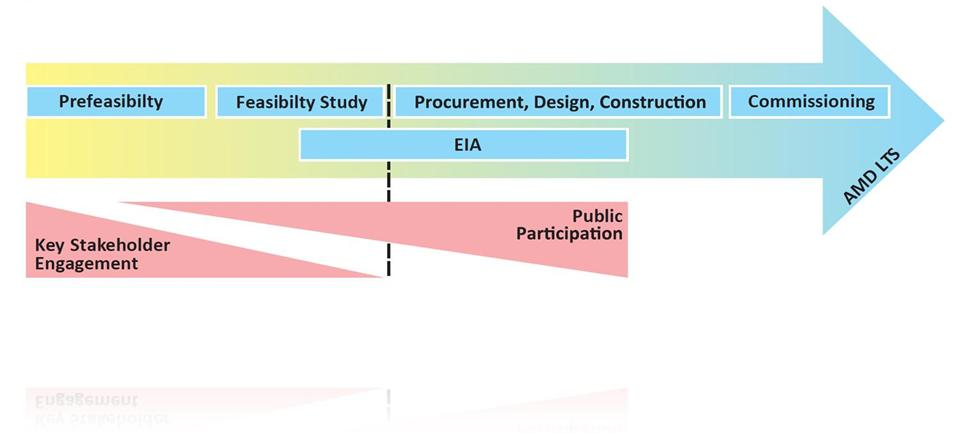KEY STAKEHOLDER ENGAGEMENT AND COMMUNICATION
“A feasible solution will be one that is technically sound, environmentally
sustainable, economically viable, institutionally feasible & legally acceptable”

The feasibility study is a planning study to investigate all options for a
long-term solution to the AMD challenges in the East, Central and West Rand
underground mining basins. The study to a large extent, was informed by
existing information, monitoring initiatives, and technical input and expert
advice.
Communication Programme Objectives
The stakeholder engagement and communication programme
for the study was designed with the following objectives in mind:
To undertake focused consultation with identified key stakeholders and
representatives of stakeholder sectors/ groups to assist in identifying
sustainable solutions, technical options, management scenarios, etc. To engage identified key stakeholders in various relevant fields throughout
the study, to obtain their input and comments on concepts, principles, and
assessments of alternatives, To assist the Department to keep the wider stakeholder group informed of
progress and key outcomes and to provide opportunities for constructive input to
inform the Feasibility Study. To communicate information to the wider stakeholder group in a manner that enhances their understanding of the AMD challenge and enables them to provide constructive inputs. To record stakeholder input for consideration in informing the Feasibility
Study.
Engagement with key stakeholders
Key stakeholders were engaged to obtain existing information, data from
current monitoring initiatives, their technical input and expertise towards
informing the study through:
Study Stakeholder Committee (SSC) Meetings
The SSC was established in order to allow the study team to engage with the
identified key stakeholders whose input was critical to the investigation,
development and/or implementation of the long-term solution.
Three SSC meetings were held during the study, each one focused on the draft
outcomes of the three main phases of the study (illustrated below).
Who are key stakeholders in this study?
Key stakeholders are parties whose input is critical to the success of the study
and who are able to provide insights that can assist in directing the study and
its outcomes (for example: representatives of various National, Provincial,
Local and District Government, NGO’s, organised business, mining, industry,
labour, agriculture, water utilities, community leaders, academics, etc).

Technical Workshops, Forum Meetings, Individual Consultation Meetings and Focus Group Discussions
Focus group meetings, individual consultation meetings and technical workshops
with relevant key stakeholders regarding the various study components were held
and provided valuable information and comments for use in the Feasibility Study.
Meetings were held with Non-Governmental Organisations, Provincial and Local
Government, Academics and various Technology Providers, amongst others. A list
of all the groups and sectors which attended these meetings and contributed to
the study is provided on the acknowledgements page
Catchment Forums were also consulted by the Department of Water Affairs through
presentations at catchment forum meetings and included the Klip River
Forum,Blesbokspruit Forum, Waterval River Forum, Grootdraai Dam Forum,
Wonderfontein-Loopspruit Forum and the Vaal Dam Reservoir Forum. For more
information on these forums please go to:
http://www.reservoir.co.za/
How do you get copies of the study documents, press releases etc ?
Documents such as newsletters, press releases, presentations and the study
reports are available on the Documents Page
Communication to the wider stakeholder group
The aim of communication to the wider stakeholder group (i.e. all interested
parties), was to:
inform stakeholders of the objectives, scope, progress and key outcomes of the study, and build further understanding of the AMD challenge.
Stakeholders were also provided with the opportunity to contribute constructive
inputs to inform the study by providing comments via a dedicated mail box to the study
team.
When can the general public register as Interested and Affected Parties ?
Since the Feasibility Study was a planning study that was aimed at investigating
different options and recommending a feasible long-term solution for the AMD
challenges in the Eastern, Central and Western basins, it did not include the
Interested and Affected Parties (I&AP’s) registration process in terms of NEMA
(107:1998). The Department is however currently in the process of initiating the
Environmental Impact Assessment (EIA), as part of which all I&AP’s will have an
opportunity to register, participate and comment.

|